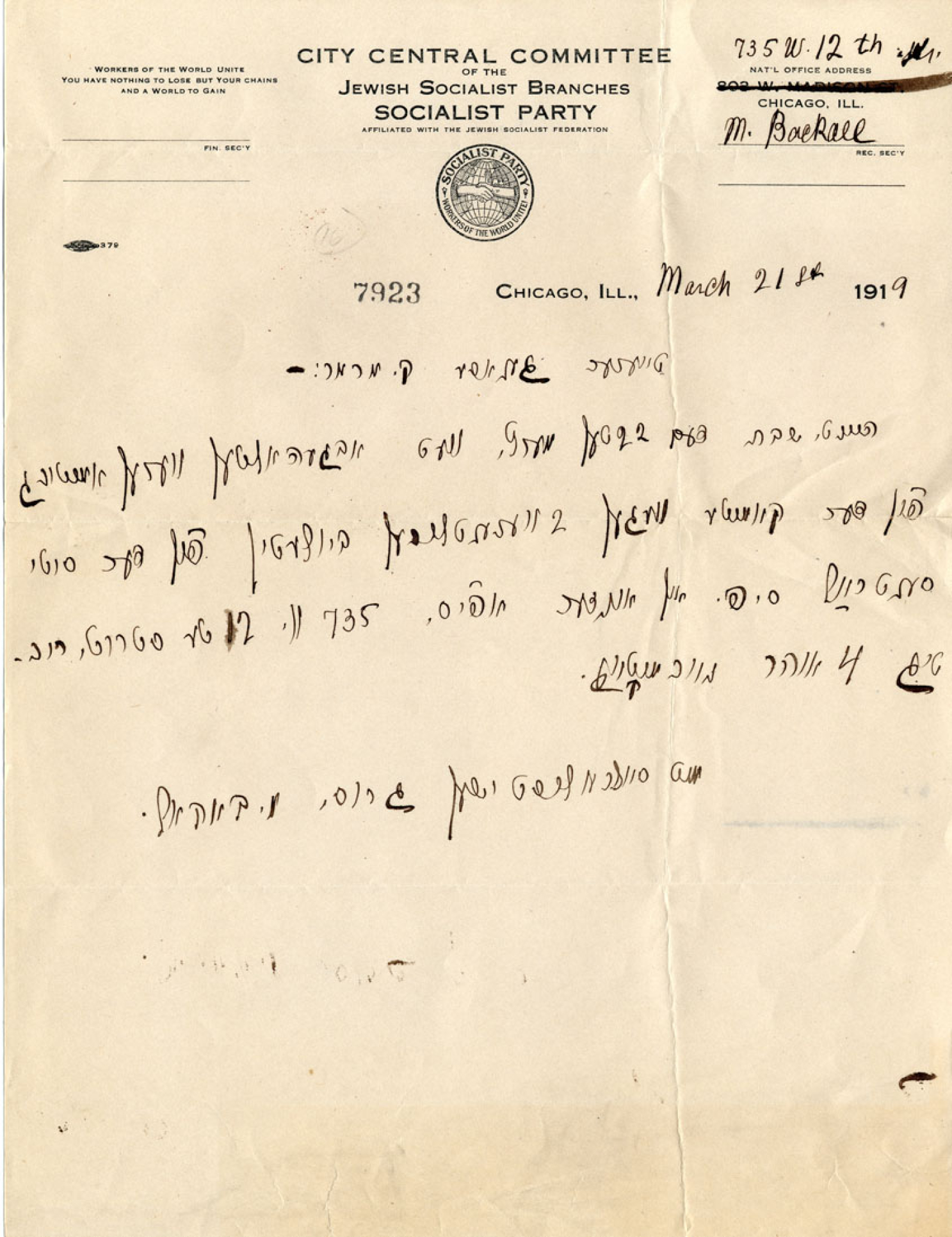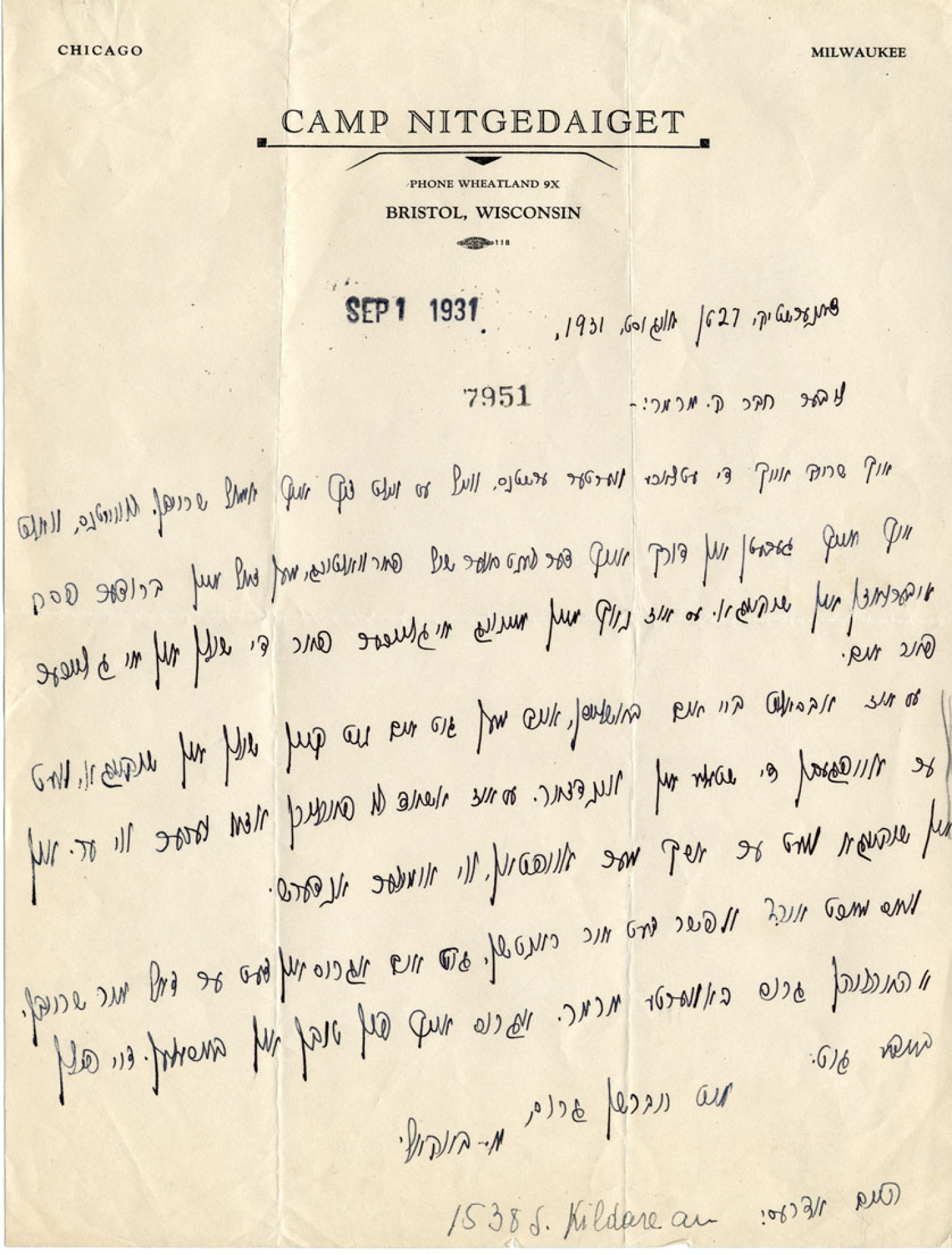Di gantse velt af a firmeblank: The World of Jewish Letterheads
Assemble the letterheads of Jewish organizations, institutions, and individuals in Europe, North and South America, and Palestine from the 1890s to the eve of World War II in 1939 and you have a portrait of the Jewish world: transnational; diverse in language, political, and religious orientation; and flourishing.
Di gantse velt af a firmeblank (The Whole World on a Letterhead) is an experiment in building that portrait. Here, we hope to bring you several times a month, a different example of letterhead from a single collection in the YIVO Archives, the Papers of Kalman Marmor.
Marmor, a Yiddish writer and cultural activist, was born October 11, 1879 in Mayshigola, Vilna Gubernia (today Maišiagala, Lithuania). In 1906, he settled in the U.S. Initially active with the Labor Zionist movement, he later became a Communist. He was an organizer of the 1937 World Yiddish Culture Congress, cultural director of the International Workers Order, and a contributor to the Communist Yiddish newspaper, Morgn Frayhayt. Between 1933 and 1936, he lived in Kiev, where he worked at the Institute of Jewish Proletarian Culture and prepared scholarly editions of the work of American Yiddish poets and writers. During Stalin’s Great Terror, the Institute was liquidated, and much of its leadership was arrested and executed. Marmor, an American citizen, returned to the U.S. He died in Los Angeles in 1956.
His papers at YIVO contain several thousand letters from the turn of the 20th century to the 1950s. He had an astonishingly diverse array of correspondents, not limited to Zionist and Communist activists.

Note from M. Bakall of The Central Committee of the Jewish Socialist Branches of the Socialist Party, Chicago, Illinois, to Kalman Marmor, March 21, 1919.

Letter from M. Bakall at Camp Nitgedaiget, Bristol, Wisconsin to Kalman Marmor, August 27, 1931.
M. Bakall is most likely Morris Bakall, a Jewish socialist from Chicago. He is mentioned in a short news item in The Day Book, a Chicago periodical on August 23, 1916: “Jewish Folks Want Civil Justice—Hold Meeting”:
The promotion of civic justice to the Jews, both of America and Europe, was the purpose of a meeting at the West Side Auditorium yesterday. The Hebrew race is bearing the brunt of the war was the claim of several speakers.
M. Bakall, secretary National Workmen’s Committtee for Jewish Rights and chairman of the meeting, protested against the expulsion of 100,000 Hebrews from the American Federation of Labor last week. The unions were suspended because they furthered an attempt to give Socialism a place in the propaganda of the labor body.
A few years later, Bakall writes to Marmor from the offices of The Central Committee of the Jewish Socialist Branches of the Socialist Party, established in 1912 to facilitate outreach to Jewish workers in Yiddish. The Committee published 100,000 copies of the Socialist Party Platform in Yiddish and leaflets by Eugene V. Debs, among other things. Here, Bakall invites Marmor to a meeting of the board of the Committee’s biweekly bulletin.
Among Bakall’s letters to Marmor is also this one, written more than a decade later from Camp Nitgedaiget. There were several camps of this name (which means “Don’t Worry” in Yiddish), including one near Beacon, New York and another in Massachusetts. All were at least loosely affiliated with the Communist Party, and so this letter indicates a shift in Bakall’s political orientation from trade unionism to communism. In this letter, he asks for Marmor’s help in securing a position for his brother Peysekh in a workers’ school in Chicago. “He has decided that if he can’t get a school in Chicago, he will give up the profession altogether. It would be a shame to lose someone like him, and in Chicago he would accomplish way more than someone else could.”
Series curated by Roberta Newman; Images digitized by Vital Zajka.